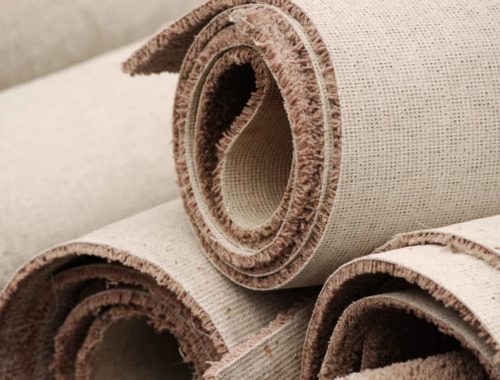Are you tired of that old, worn-out carpet dominating your living space? Or perhaps you’ve decided it’s time for a fresh look and are ready to embark on the journey of revamping your home’s flooring. Look no further! In our comprehensive guide, “A Step-by-Step Journey: Mastering Carpet Removal Techniques,” we’ll take you through the intricacies of bidding farewell to your old carpet and ushering in a new era of flooring elegance. From gathering the necessary tools to executing flawless removal techniques, we’ll provide you with a detailed roadmap for success. Whether you’re a seasoned DIY enthusiast or a novice in the realm of home improvement, our step-by-step instructions and expert tips will empower you to tackle this project with confidence. Say goodbye to drab carpets and hello to a refreshed living space—it’s time to master the art of carpet removal!
Embarking on a carpet removal project can be both exciting and daunting. Whether you’re refreshing your space with new flooring or addressing wear and tear, proper preparation sets the stage for success. In this guide, we’ll delve into the crucial initial steps of mastering carpet removal. From gathering the right tools to assessing the condition of your flooring, every detail matters. Let’s explore how careful preparation can make all the difference in achieving a smooth and efficient carpet removal process.
Before diving into the removal process, take time to evaluate the condition of your carpet. Note any areas of heavy wear, stains, or damage. This assessment will help you anticipate potential challenges and plan accordingly. Additionally, consider the type of carpet you’re dealing with, as different materials and constructions may require specific removal techniques.
Prepare the area for carpet removal by clearing out furniture, rugs, and other obstacles. A clear workspace not only facilitates the removal process but also minimizes the risk of damage to belongings. Take care to protect any items that cannot be removed from the room, such as built-in furniture or fixtures, with drop cloths or plastic sheeting.

Equip yourself with the right tools for the job. Essential tools for carpet removal may include a utility knife, pry bar, pliers, hammer, knee kicker, and carpet stretcher. Depending on the specifics of your project, you may also need safety gear such as gloves, safety glasses, and a dust mask. Having the proper tools on hand ensures efficiency and safety throughout the removal process.
Decide how you will dispose of the old carpet and padding once removed. Depending on your location and local regulations, you may have options such as curbside pickup, recycling centers, or landfill drop-off. Plan ahead to arrange for disposal or recycling services as needed. Additionally, consider the environmental impact and explore eco-friendly disposal options if available.
Prioritize safety throughout the carpet removal process. Wear appropriate safety gear, including gloves and a dust mask, to protect against dust, debris, and potential hazards. If working with older carpeting, be cautious of potential exposure to allergens, mold, or asbestos. Ventilate the area by opening windows or using fans to improve air circulation.
As you embark on the journey of removing carpet and padding, you’re not just revealing bare floors – you’re unveiling the potential for transformation. Whether you’re refreshing your space or preparing for a new flooring installation, mastering the art of carpet removal is essential. In this guide, we’ll delve into the step-by-step process of removing carpet and padding with precision and efficiency. From initial preparation to final cleanup, discover how to tackle this task like a seasoned professional, leaving behind a clean canvas for your design dreams to unfold.
Begin by clearing the room of any furniture, rugs, or other obstacles that may impede the removal process. Clearing the space not only provides ample room to work but also prevents damage to belongings during the removal process. If removing carpet from multiple rooms, work methodically to ensure a smooth and organized workflow.
Using a utility knife, carefully cut the carpet into manageable sections, typically 3 to 4 feet wide, along the length of the room. Take care to avoid cutting into the subfloor beneath. Once cut, roll up each section of carpet tightly, starting from one end and working towards the other. Secure the rolled-up carpet with duct tape or twine to prevent it from unraveling.
Next, focus on removing the tack strips along the perimeter of the room. Tack strips are typically nailed or glued to the subfloor and hold the carpet in place. Use a pry bar or hammer to gently lift and remove the tack strips, taking care to avoid damaging the subfloor or surrounding walls. Dispose of the tack strips responsibly.
After removing the carpet, turn your attention to the padding beneath. Depending on the installation method, the padding may be glued or stapled to the subfloor. Begin by lifting and rolling up the padding in the same manner as the carpet. Dispose of the padding responsibly, taking care to minimize mess and debris.
Inspect the subfloor for any remaining staples, adhesive residue, or debris left behind after removing the carpet and padding. Use pliers or a scraper to carefully remove any staples or nails protruding from the subfloor. If adhesive residue remains, consider using a solvent or adhesive remover to dissolve and loosen the adhesive for easier removal.
Embarking on a carpet removal project requires the right tools to ensure efficiency and success. From precise cutting to thorough cleanup, having the proper equipment is essential. In this guide, we’ll highlight the must-have tools for carpet removal, equipping you with everything you need to tackle the task with confidence.
Mastering carpet removal techniques is a valuable skill set for any homeowner or DIY enthusiast. From preparing the space to safely disposing of old carpeting, each step plays a crucial role in achieving a successful outcome. By following the step-by-step guide provided, individuals can confidently tackle carpet removal projects with ease, saving both time and money in the process. Remember, patience and attention to detail are key as you navigate through each stage of the removal process.
If you have any questions or need further assistance with carpet removal or other junk hauling services, don’t hesitate to contact us at JUNKAHAULICS in Raleigh. Our team of professionals is dedicated to providing reliable and efficient solutions for all your junk removal needs. Give us a call at 919-478-4814 to schedule a consultation or request a quote today!


JUNKAHAULICS